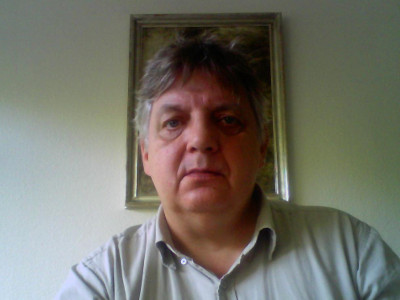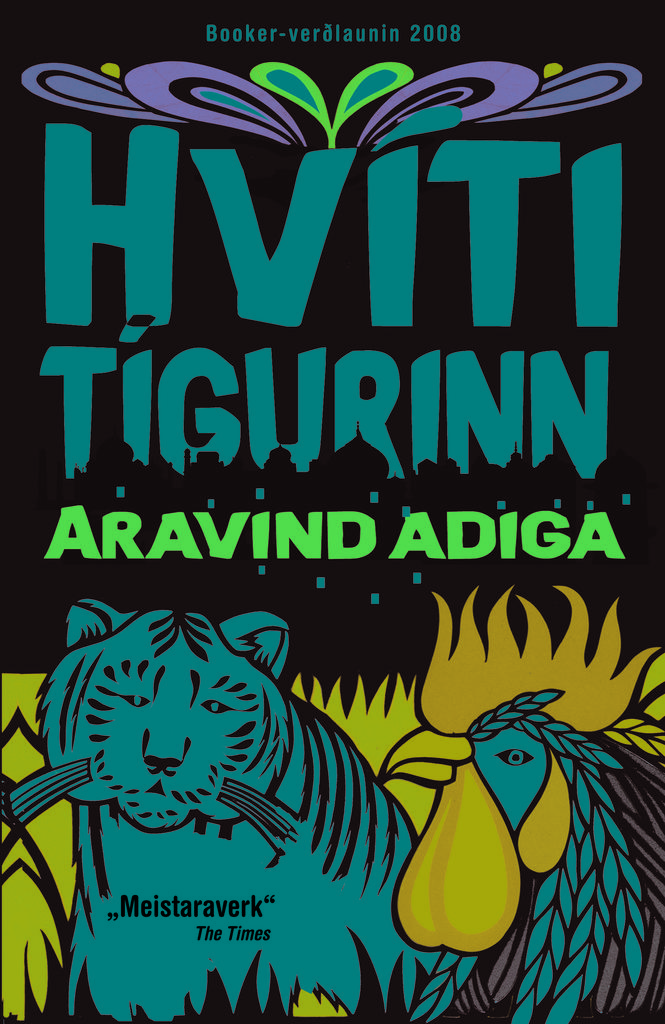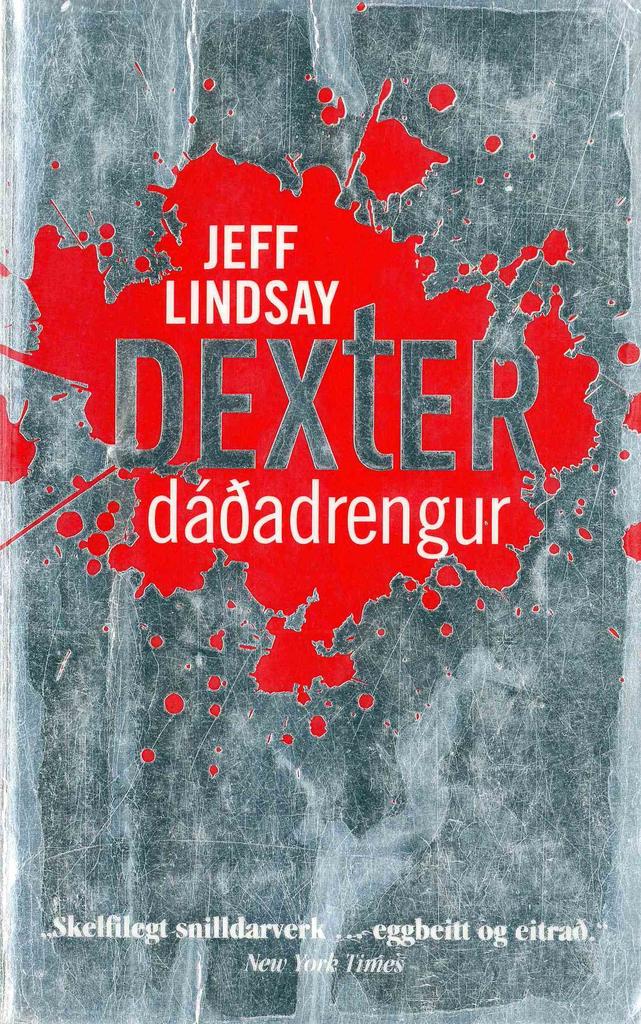Bio
Ísak Harðarson was born in Reykjavik on the 11th of August, 1956. He graduated from college in 1977 and continued his studies at the University College of Education, and also studied Icelandic at the University of Iceland.
Ísak’s first collection of poetry, Þriggja orða nafn (A Three Word Name), was published in 1982, followed by additional poetry collections, a collection of short stories, a novel, and memoirs. His poetry was published in the collection, Ský Fyrir Ský (Cloud For Cloud), in 2000, and has appeared in numerous magazines and collections abroad. Ísak translated a number of books into Icelandic, among them The Restraint Of Beasts, by British author Magnus Mills.
Ísak died May 12th 2023.
From the Author
From Ísak Harðarson
Poetry? Nothing exists but poetry! – and we are present in the middle of its swirling flux, and like everyone else I manage to grab the occasional spark, and chirp: “Look, look!”
And Life whispers: “You yourself are a spark in my poetry. And perhaps you will become a poem which will be read in heaven...”
Me? A little bird that never flies up high out of the forest – but there, just above the treetops, I have been bathed with the warm rays of an incomparable eye, and there Littlebird has caught sight of Lifebird high high up in the glittering brightness and heard it boom out Truth from love and Love from truth... And Littlebird alights, trembling, in the clearing between the trees and tries to recall each sound with its low and discordant chirping.
And Life itself is a bird that flies – HOME!
Ísak Harðarson, 2001.
Translated by Bernard Scudder
About the Author
On the Works of Ísak Harðarson
Ísak Harðarson was born in Reykjavík on the 11th day of August in 1956, at 12:52 pm. Ísak has described his youth and upbringing in his “book of confessions” Þú sem ert á himnum, þú ert hér! (Thou, Who Art in Heaven, Thou Art Here!, 1996). The beginning of this autobiographical novel looks like another one of those “boy books” or “coming of age books”, championed by the authors Pétur Gunnarsson and Einar Már Guðmundsson, and Ísak is indeed of the same generation as these authors. He was raised by his grandparents at Snorrabraut [a street in downtown Reykjavik – trans.]. He learnt of the expanding outside world through his children’s games, until he began to be allowed into Austurbæjarbíó (The East End Cinema). There he was greeted by Roy Rogers among other heroes of the black and white screen and took to killing cowboys and Indians from morning to night. His confirmation money made him a man; now all doors stood wide open to him on Laugavegur [the main shopping street in downtown Reykjavik – trans.] and suddenly the role model Roy Rogers had long hair and called himself John Lennon. But at the very time when things are just starting to get exciting in the boy books and the boys of these novels begin their acceleration, speeding along all the way to grammar school, the boy Ísak stops for a moment and makes the mistake of looking up at the sky:
Oh, how big was this sky, how empty and bottomless and open – open
like gaping jaws that wanted to swallow the whole world in one bite! (51)
And Ísak the boy starts thinking and listening to the songs of the thrushes:
He was suddenly so shrill, so meaningless, so off-key. Maybe the birds had all gone mad? Maybe the entirety of life was some meaningless madness and horror? (51)
And the boy Ísak starts to think and think:
And I – I was also a liar, I was also pretending! I certainly didn’t know what humanity was for. WHAT WERE WE FOR? What was the purpose of ME?
And the boy Ísak is no longer a boy in a boy novel but more like a modern version of Job, or of Rev. Jón Steingrímsson the fire vicar, tormented by doubt, mental anguish and an endless search for himself and for meaning. Although he himself does not suffer the same catastrophes as they do, the sufferings of Job and Rev. Jón are in front of him every day on the TV screen. No one seems to think like him, his friends are not particularly concerned with the meaning of life and are happy just being teenagers, and he tries to play along. He tries to believe in love, regardless of God, but has mixed success in practicing it.
Ísak went to the Teacher Academy of Iceland and was introduced to poetry, which was different from the poetry he had known until then, it was the poetry of men who faced life with honesty. Every day in the classroom a whole world opened up to him:
Poetry soon became a valuable anchor for me on life’s ocean. One by one the poets knocked on my door and invited me to get to know them better. Jóhann Sigurjónsson, Þorsteinn frá Hamri, Jónas Svafár, Hannes Sigfússon, Stefán Hörður, Jón Óskar, Jón úr Vör, Jóhann Hjálmarsson, Dagur Sigurðarson, Ólafur Haukur. . . the list was endless. But I found that one poet towered over all of them and clearly was in league of his own. It was Steinn Steinarr. For a time, I felt that he had lived through and put into words everything that I was feeling within myself. (p. 71)
A Man Becomes a Poet
At the time of writing Ísak Harðarson has published eleven works of fiction: eight poetry books, a short story collection and a novel, as well as the book of confessions. When reading through Ísak’s poetry books in chronological order, one marvels at how strongly they react to their present times. Ísak is like the canaries that miners took with them down the tunnels, he senses something in the air and reacts, long before others start to feel any discomfort. In his first books the poet confronts a present that is growing faster, more complex, mechanical and cruel by the minute, it is as if the poet has lost some paradise, something has crumbled, shattered or died. Despite the spiritual freedom that this resistance gives to the poet, he is yet in some ways fettered.
Ísak Harðarson emerges more than three decades after the modernists won the war. He writes in times when the rhyme-free poem had become a “tradition” and its legacy has established itself as the main current of modern Icelandic poetry. Ísak’s poems do not show particularly strong influences from any verse written before the modernist era and poetic dialogue with the Icelandic Sagas, the Edda Poems, folklore or the national poets rarely or never appear. It is also hard to trace any direct links with foreign authors in Ísaks poems. Ísak is not a cosmopolitan in the sense that we would give to the word, there are no strange leaves blowing along foreign streets, “written in Paris, 1989” would hardly be the subtitle of a poem by him; the poet does not address the geniuses of the world, dead or living, or sit beneath a palm tree, yellow sand between his toes, a senorita in his lap, writing about tarantellas and tortellini.
Yet, the world that is presented in Ísak’s poems is far from being uniquely Icelandic. His poetry is a reaction to a bigger world, although it is usually the world on the TV screen; the poet looks at the world but does not participate in it, the world is as ugly as it looks on the screen and he reacts accordingly. Ísak does not present himself as a “learned” or a classical poet like many of his predecessors, and his word choices are usually everyday language, or unexpected and innovative, confusing, even half-mad, rather than “sophisticated” or self-consciously poetic.
One might say that Ísak has followed the same path as those Icelandic poets, who to a certain extent are, or have been regarded as social misfits. Ísak’s stance within and against the world, and his resistance, reminds one of the attitudes of Steinn Steinarr, Dagur Sigurðarson, even of Bólu-Hjálmar, with some of the frenzy of the poems of Æri-Tobbi and Jónas Svafár. Ísak can be placed alongside poets who are outside the circle and the mainstream, outside any system or pattern and stand in opposition to prevailing ideas in society. Ísak’s poems often convey a deeply rooted despair and pessimism, yet it seldom manages to erode the energy and humour of the poems. The same would apply to the other poets mentioned.
The poems fluctuate between a heartfelt pain, harsh critique and seriousness, and utter tomfoolery, even gibberish, and sarcasm. Sometimes however, all these things are simultaneously at play, which may be the most charming characteristic of Ísak’s poems: he is unpredictable, combining high and low culture, seriousness and playfulness, and constantly tries to surprise his readers with his unexpected connections, word-plays and figurative language.
The First Book of Poems
Ísak’s first poetry book was published in 1982, around the time when the ideological flames of the seventies were dying out; the most unoriginal thing a poet could think of around 1980 was to write poems about his honest wish to change or improve the world and to believe in the poem as an effective tool to wipe out poverty and evil.
The chord, which Ísak Harðarson strikes in his first book, is different from that of other authors emerging around the same time, his tone is more serious and anguished. Ísak’s first poems are city poems, nature and the countryside are far away, they are really big city poems, nature is not missed and it is not desired. The cityscapes of Þriggja orða nafn (A Three Word Name, 1982), Ræflatestamentið (The Bum Testament, 1984) and Slý (Slime, 1985) are full of anger and hate. The road to Sunny Hill is gone and all roads lead to Madness, Lucifer’s leprous digging tool tears into the globe and God has switched the sun off due to unpaid bills. In Þriggja orða nafn the poet resembles an open wound, the despair is still a bit raw and perhaps overdramatic at times. The later hallmarks of Ísak’s writings, the humour, word play and powerful imagery are not very prominent yet. Steinn Steinarr’s influence is considerable. These books are fairly close to punk, which erupted in an era of hopelessness that replaced idealism, especially Ræflatestamentið, where the title makes a direct reference to punk, a “ræfill” (a “bum”) is an Icelandic “punk”. Instead of compassion for the disenfranchised in society or intelligent ruminations on ideological systems and universal solutions, people found an escape in apathy. Instead of pretending to know everything and sympathizing with everyone, they wanted to know nothing and to not give a damn about anything:
I would most like to be killed by an atom bomb
a) A Soviet one in a closed way
b) An American one in an open way
c) A Faeroese one quite unexpectedly
The Cold War seems to have ground all candidness off the poet. Ræflatestamentið is darker, and at the same time much funnier than the first book. God created the dodo in his image and advances in technology and science do little more than add new and more varied ways in which to destroy the world. Doomsday responses are bellowed over the pages of the book but the purpose of life is INCREASED ECONOMIC GROWTH. Ræflatestamentið is filled with a biting criticism of “old Goddie”, and seems at first glance to be written by not only a godless man, but by a stern atheist. The reversed cross of antichrist fills a whole page at the beginning of the work, while on the back page there is a picture of a hand that has just written the title of the book in blood on the poet’s front door. The mortal danger said to be a necessity for every poet was very real at the time, as people really thought the earth would explode sooner or later. Anyone who reads Ræflatestamentið¸ which appeared in the excellent collection Ský fyrir ský (Cloud Covers Cloud, 2000) now, is in a similar position as someone rocking rolling, singing along “þið munuð öll deyja!” (“you will all die"!) with the ghosts of the Icelandic band Utangarðsmenn (Outsiders) in the year 2000. One can admire the energy and laugh at the humour, but the mortal danger has passed, for the time being at least.
Óli Saw a Sun
The main ingredient of Ísak’s uniqueness is something, which resembles naivism, combined with the utmost seriousness. He uses, names, imitates or refers to things which are outside the poetic subject matters poets had hitherto allowed in their poems. This naivism appears in the first book as hypersensitivity, candidness and childish simplifications, which has in the later books been quite artistically disciplined in word plays and a childish need for babbling. The poet does not understand or pretends not to understand the world and approaches it like a child, does not place himself beside thinkers and intellectuals, but goes the opposite way. Ísak has an affinity with simple and childish characters, the children’s book heroes Einar Áskell and Paul who was alone in the world. These characters are then placed within a mad, complicated, even a “fallen” world. For the most part, Ísak’s books have a very unified vision, they contain some kind of a fantasy world, which satirizes or even gives our world and worldview a sound thrashing. Many of his poems and whole books are like dystopias or dark utopias. Veggfóðraður óendanleiki (Wallpapered Infinity) came out in 1986. The book’s main character is Óli, whom most Icelanders recognize from Icelandic alphabet books for 6 year olds.
ÓLI SAW A SUN
A MAD SUN
ÓLI SAW A BURNING MAD SUN
ÓLI SAW A BURNING MAD SUN IN THE SKY
One could hardly imagine a more simple and innocent character; which intensifies the drama of the “Fall” expressed in these simple phrases. Óli lives in Arctica, an ice-land, where the emotional coldness is near an absolute zero. The book can be seen as an alternative to, and a protective wall against the onslaught of modernity, technology and rationalism, deafening mass media and the demands of society to “travel through the more enlightened and safe channels of the brain”:
with the brain we did ha ha ha
with the lips we did bla bla bla
one 2 III a tiny little zzstep
jusst like that this reality game of ours
Ísak mashes the words together, rips them apart, glues them together, rips them again and makes a word jumble out of it all. It contains children’s lyrics and non-sensical lyrics, which are not meant for children and are not nonsense. It is as if Ísak is allergic to language, he is too sensitive to its ambiguities and breaks out of its multiple constraints. An average human being faced with such a text approaches it like a dyslexic; he is forced to look carefully at every single word, to misunderstand a great deal and to sometimes not know whether there is nonsense or seriousness behind it. Veggfóðraður óendanleiki (A Wallpapered Infinity) is like a sequel to George Orwell’s 1984, Arctica has echoes of Big Brother’s Oceania. In the novel 1984 everyone had to speak “newspeak”, a language with a minimum vocabulary, designed to limit people’s thinking. In Veggfóðraður óendanleiki different versions of newspeak are announced regularly by the ministry of fear:
Due to changed circumstances
the following corrections to reality
have been agreed upon:“soul” becomes “mind”
“God” becomes “society”
“heaven” becomes “social maturity”
“I” becomes “we”
In 1986 there was one TV station in Iceland and two radio stations. No one had a computer or a mobile phone and at the time the only mezzanine in Iceland was inside the Glæsibær shopping mall. Because of the hyper-reality and satire or criticism in Veggfóðraður óendanleiki, it seems destined to become a classic; it describes with an increasing accuracy a modernity which is getting faster and faster, and doubtless more and more people will identify with Óli, the play inmate of arctica. Ísak not only feels the speed of modernity, but also its acceleration: The one who feels the acceleration can calculate what the speed will be.
The Sky
A religious need shines through in most of Ísak’s books, from the point where he lost and found again the road to Sunny Hill in the first book. By contrast in Ræflatestamentið, the poet took a rebellious stance, attacking smooth-talking reverends; God is nicknamed old Goddie and the book starts with a reversed cross. Although the subversive cool of his rebellion may have been shocking to some, this is still a fairly “safe” way; it was an “accepted” rebellion and is unlikely to have shocked many readers. It is likely to have had a much stronger audience with a young, radical and rebellious generation, and indeed it did; and this country’s leftist intellectual elite was probably not displeased with the godlessness. However, having read Ræflatestamentið, people probably find it hard to believe that the same man is writing these lines in Stokkseyri without irony: “Ah, this reverend, / he is no poet – he writes/ only the truth.”
In recent times, if someone speaks publicly about his faith, people immediately assume he has lost it; it is not considered the hallmark of a free mind. But there are other problems. How should one address God or write about him, when nearly all religious vocabulary is hackneyed, meaningless or worn out by sentimentality, the words all sickly sweet? What meaning do words like sin, mercy and omnipotent carry? We have a remarkably strong religious poetry tradition, but religion in poetry disappeared with the rhyme. The modern poem has always been synonymous with doubt, questioning and atheism. In the unrhymed tradition there are almost no religious poems one can look to as models. If on the other hand one wants to be a sceptic or to believe in nothing, numerous poems by our best poets express this doubt.
It is interesting, that by being a believer, Ísak is really in a kind of an opposition to society, even an opposition to his reader group. He in fact takes more risks by writing about faith. Religious meditations dominate all of Ísak’s books, and faith and the search for faith appear to be the sources of the poet’s inspiration. This may explain the lack of dialogue with the Icelandic poetry tradition and foreign world literature; the religious need is the driving force; the search is directed inwards and modern poetry provides him with a method of expressing it. When it comes to religious vocabulary, Ísak is aware of the words one should not use. He has to circumvent the clichés, or work with them. He is also aware that deep philosophical meditations on eternity have not yielded any results: In Síðustu hugmyndir fiska um líf á þurru (The Last Ideas of Fish About Life on Dry Land), the religious discourse is deeper than ever before, in fact below sea level, and the last ideas of the fish about life on dry land are quite funny: A small cod asks a bigger cod if that eternal and infinite ocean really exists. But of course it does not exist; the mature big cod has never even seen a single drop and the answer is simple: “We swim through our own veins”.
Ísak manages to write about divinity, the nature of it and his own relationship to it, in quite an original way. He allows himself to use his imagination and is unafraid to use metaphors, rarely referring to God by name. He has to smuggle religion in through channels of the brain that are different from the ones Icelandic churches use; he must sneak up on his readers from behind, make them rethink things and see everything in a fresh LIGHT. In the poem “Himininn snýr niður” (“The Sky Faces Downwards”), the sky is likened to a dog, which follows the poet everywhere, and does not leave, regardless of how much the poet curses it. Soon the reader begins to understand that the sky is God himself: but at night/ I carry my hopes and fears/ for him in a bowl beneath the house wall.
The sky laps up everything that is in the bowl. Arguably quite an original way to write about the power of prayer. There is a momentum of faith that grows stronger with every book; his books are almost a coming of age narrative of a man who searches for God and finds him. Stokkseyri is on the whole a religious work, in which the world suddenly becomes one whole, the village Stokkseyri seen from the earth mirrors Stokkseyri seen from the sky. Hvítur ísbjörn (A White Polar Beer) shows a poet who has reached full maturity; “Maður án höfundar” (“Man Without an Author”) is a powerful religious poem, pregnant with religious conviction; it seems to combine Ísak’s best qualities and is likely to stand alone as by far one of the most powerful religious poems of the 20th century.
The Man-hunting Manual
In Ísak’s first novel Mannveiðihandbókin (The Man-hunting Manual), the author unites all the main elements of his poetry books. The novel contrasts a peaceful country life, which calls to mind Stokkseyri, with the corrupt city, suffocating in evil, temptation and consumption, albeit a bit more pleasant than the city in Slý (1985). The city temple is Rínglan, a shopping pyramid in seven heavens, where people consume and enjoy, and day and night the loudspeaker system blast: “The card is my shepherd...” Like in Síðustu hugmyndir fiska um líf á þurru, men are cod heads who know nothing about life on dry land. The humour and the sense of imagery are frequently spectacular, the writing is extremely imaginative, but the driving force of the novel is a religious conviction, rather than the search for purpose apparent in the previous books. The author knows what men are for and he tries to lead men to the right path, open their eyes, the cod head can escape from the net. In the short story collection Snæfellsjökull í garðinum (Snaefell Glacier in the Garden, 1989) everything was much more vague and hidden inside symbolic allusions and oblique references. In Mannveiðihandbókin Jesus is even addressed directly, miracles occur and in the hate-filled city, evil is made manifest in the form of circling raptors and flocks of seagulls. The book is well written and the style is sometimes elevated and incredibly visual; at times it becomes naive in its simplifications and the black and white division between country and city. But for those living through times when the “Rínglan” malls manage to vacuum up an entire nation in one week, many people might benefit from sitting down and reading Ísak Harðarson’s gripping descriptions of Rínglan.
This essay is based on my book on Ísak Harðarson, Maður undir himni (Man Beneath a Heaven) and a preface to Ísak Harðarson’s poetry collection, Ský fyrir ský.
© Andri Snær Magnason, 2001.
Awards
2008 – Icelandic Bookseller Prize: Bókaþjófurinn (The Book Thief) by Markus Zusak (translation of the year)
1994 – National Broadcasting Company's Writer's Fund
1982 – Special mention, Almenna bókafélagið Anniversary Prize: Þriggja orða nafn
Nominations
2020 - Ísnálin (The Icepick - Crime Fiction Award): Feilspor (Felsteg) by Maria Adolfsson
2021 - Ísnálin: Eldum björn (Koka björn) by Lars Kepler
2011 – Nordic Council Literary Prize: Rennur upp um nótt
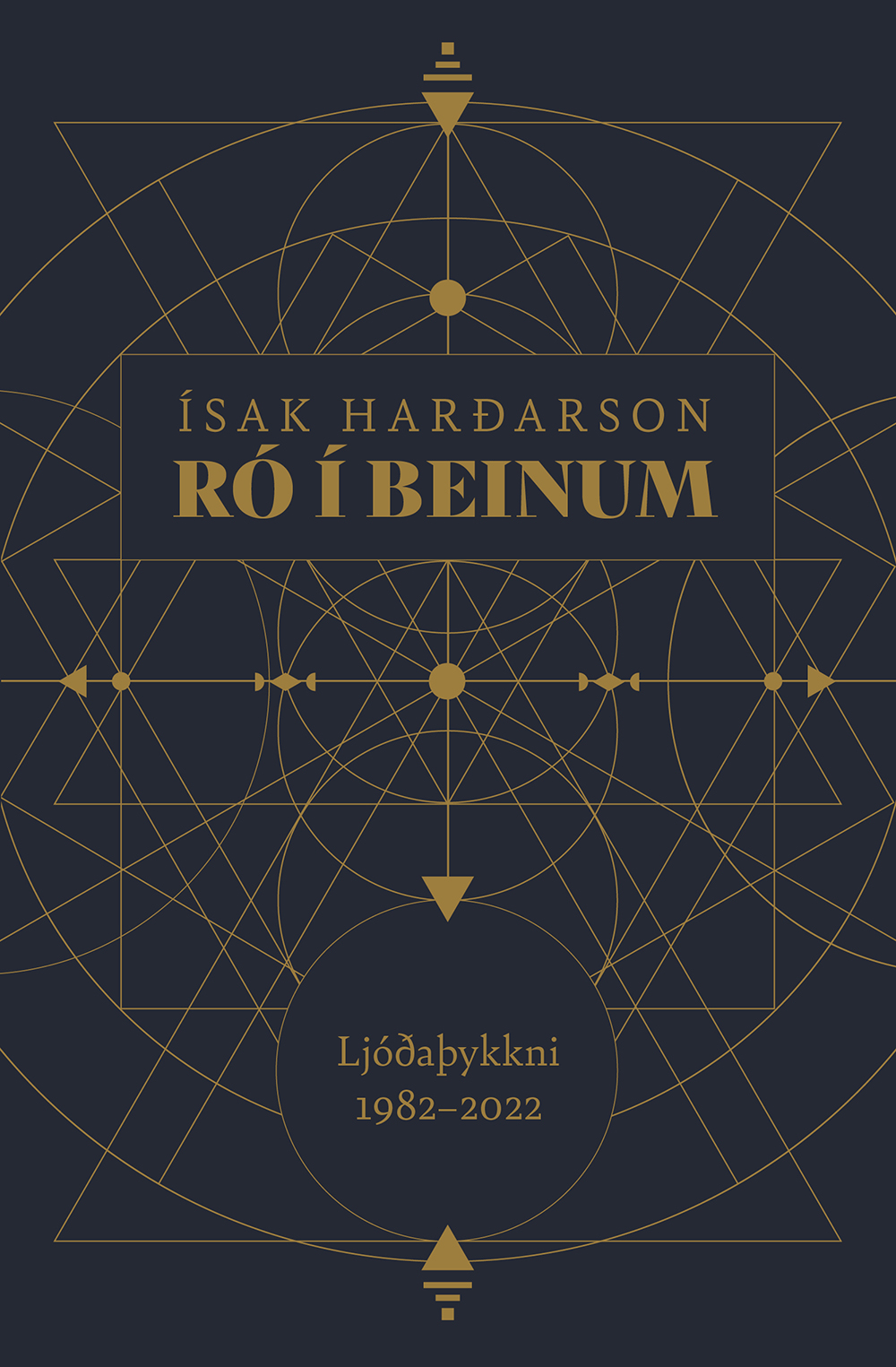
Ró í beinum : Ljóðaþykkni 1982-2022 (Relaxed Bones : Cluster of Poetry 1982-2022)
Read moreRó í beinum er úrval ljóða Ísaks Harðarsonar (1956‒2023) sem hann tók sjálfur saman og gekk frá til útgáfu skömmu áður en hann lést.. . Undirtitillinn er Ljóðaþykkni 1982‒2022 og elstu ljóðin eru úr fyrstu bók hans, Þriggja orða nafn. Ljóðabækur Ísaks urðu ellefu talsins á þessum fjörutíu árum, auk safnritsins Ský fyrir ský frá árinu 2000. Fyrir þá næstsíðustu, Rennur upp um nótt frá 2009, var hann tilnefndur til Bókmenntaverðlauna Norðurlandaráðs.. . Andri Snær Magnason ritar eftirmála.
Hamingjuvegur
Read more
Krakkaskrattar (Damn Kids)
Read moreÖreigarnir frá Lódz (The Proletariat from Lódz-hljóðbók)
Read more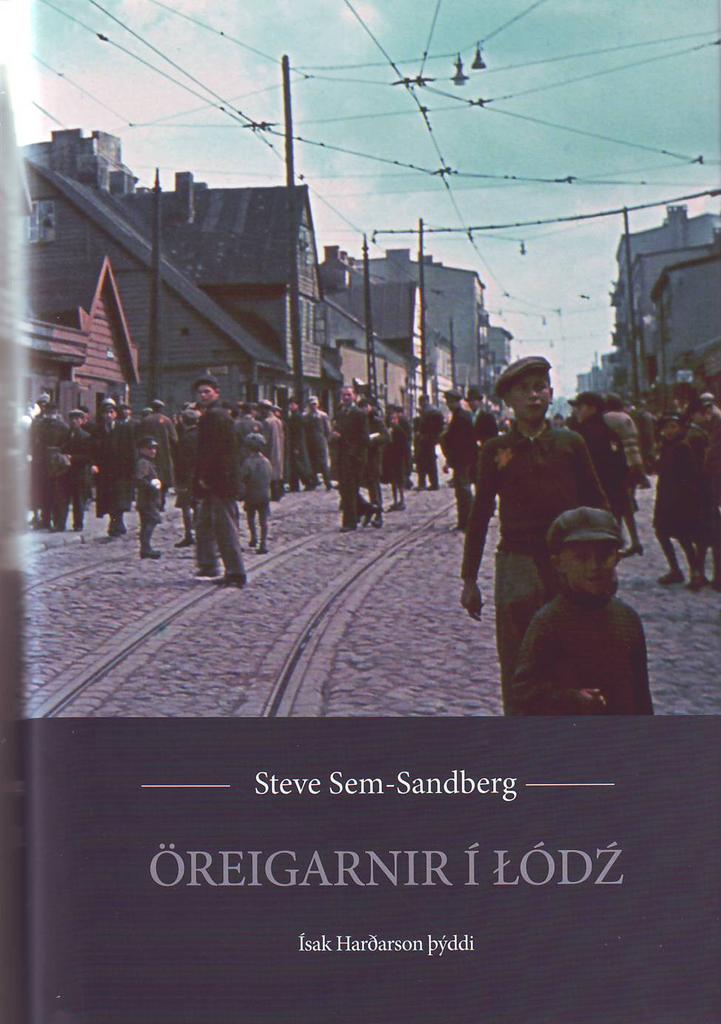
Öreigarnir í Lódz (The Proletariat of Lódz)
Read more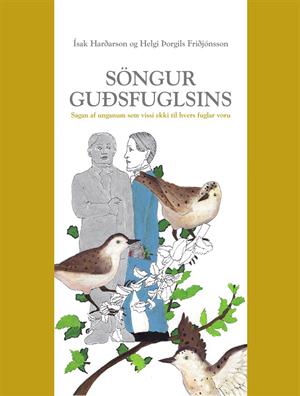
Söngur guðsfuglsins (The Song of God´s Bird)
Read more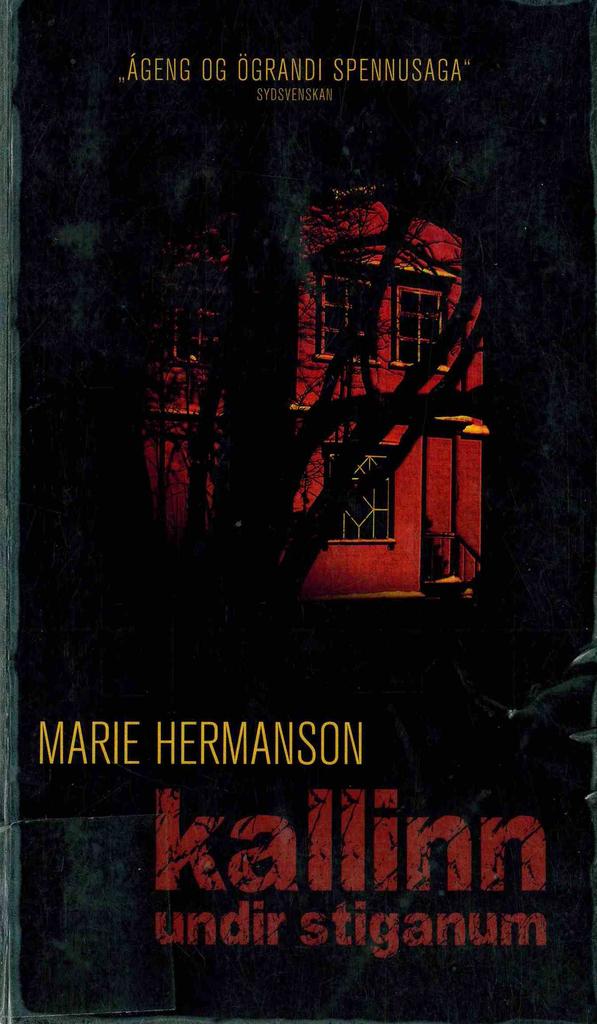
Kallinn undir stiganum
Read more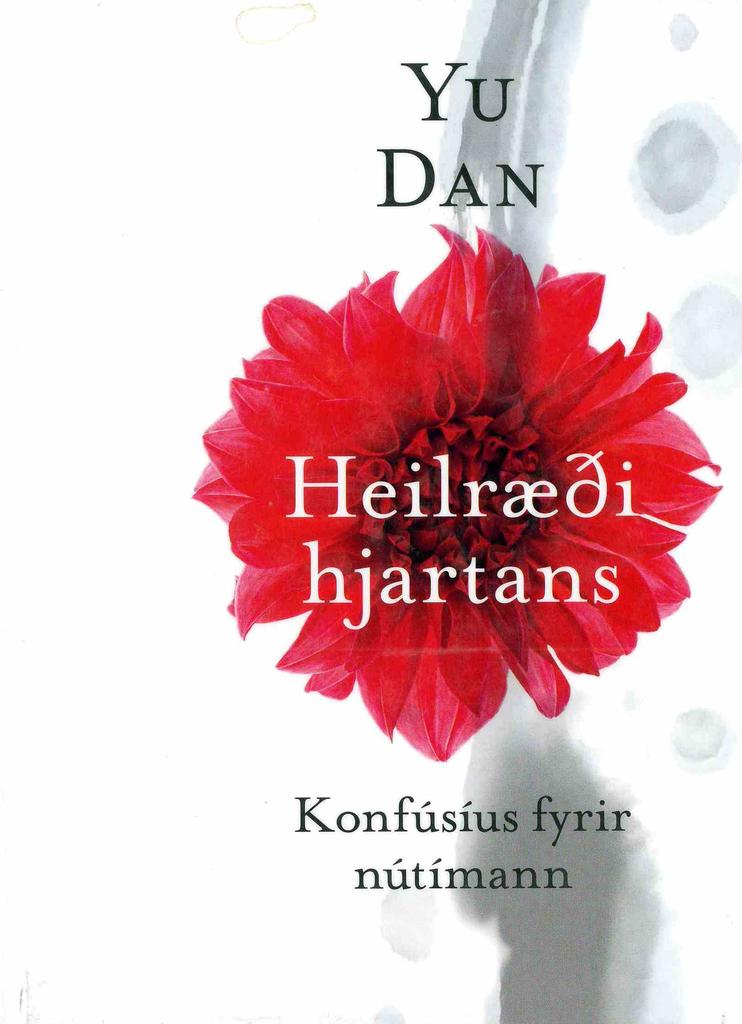
Heilræði hjartans. Konfúsíus fyrir nútímann
Read more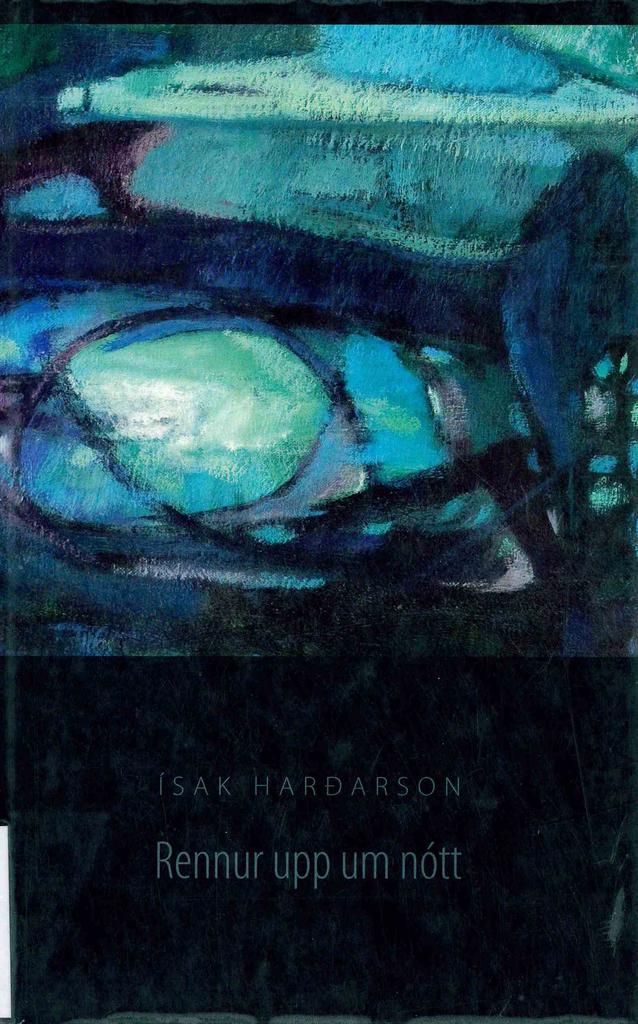
Rennur upp um nót (Comes Up at Night)
Read more
